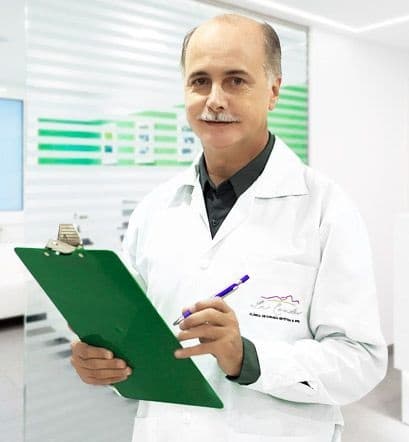Calf implants are a modern surgery designed to help improve the shape and volume of the calves. Thanks to this intervention, great results can be obtained and calf volume increased. Calf implants have a very high satisfaction rate and a very low risk of complications.
The calves are muscles that provide great aesthetics and definition to the lower legs. However, there are many causes that impair or prevent the growth of this muscle.
This can be caused by hereditary factors, illness, or stagnation in muscle hypertrophy, despite having a healthy life.
What is a calf implant?
It is a surgical procedure used to provide greater volume and better tone to the lower leg area.
To do this, silicone gel or silicone prostheses are used, the latter being the most rigid. These implants are normally custom-designed according to the specific case of each patient.

Who can have this intervention?
Calf implants treatment is aimed at men and women who want to improve the look and shape of their calves. This might be because:
- Despite exercise and healthy eating, you have little muscle development in the calf area. This muscle is one of the most difficult to grow. Therefore, it is sometimes necessary to resort to cosmetic surgery.
- Due to illness, your muscles have undergone irregular wear and tear.
- You have muscle imbalance from birth problems.
How are calf implants performed?
This is an outpatient procedure and has very few risks associated with it.
- First, it’s necessary to assess the specific conditions of the patient. We understand that each patient has different needs and tastes. Subsequently, our specialist will propose the best options according to your needs.
- The prostheses come in three different types – small, medium, and large, considering different shapes and volumes according to what the patient needs and wants.
- On the day of the operation, the procedure will not be complicated and will take about an hour. Dr. Daniel Saco-Vertiz, our specialist in plastic and cosmetic surgery, will make an incision in the natural crease behind the knee. He will create a pocket where he will place the implants.
- Finally, and once in a stable position, the incision will be closed with stitches and a bandage will be placed to reduce discomfort and swelling.

Postoperative recovery
For the first day or two, it is advisable to have your legs elevated to reduce swelling and discomfort.
After the first two days, you will be able to remove your bandages and begin to walk around your house. It is important to follow all the instructions given by the Specialist to guarantee a correct recovery and reduce the risk of scarring.
However, during the second and third weeks after surgery, you will be able to walk regularly. The skin will begin to stretch and any remaining bruises will fade as the days pass.
After a month, you can start doing activities and physical exercise such as running, cycling, lifting weights, and other regular activities.
WHICH SURGEON TO CHOOSE?
Firstly, do your homework! Check out Peru’s medical college website (Colegio Medico del Peru) and see if the doctor really has a RNE (National Registry of Specialist) license. Many doctors only have a CMP license, but this is not enough for invasive, specialist procedures.
Finally, talk to us. Make contact and have an in-depth conversation is a good starting point. This is important because you get a feel for the type of clinic we are and the service you can expect to receive.

Dr Flavio Nicolich, Specialist

Dr Daniel Saco-Vertiz, Specialist
SOUNDS INTERESTING? CONTACT US
For additional information or to schedule an appointment with one of our Specialists, please contact us. Leave us a message asking for a video call or a regular call, and we’ll be back with you shortly.
On the other hand, if you use WhatsApp, then this is safe, fast, and effective for rapid communication.

